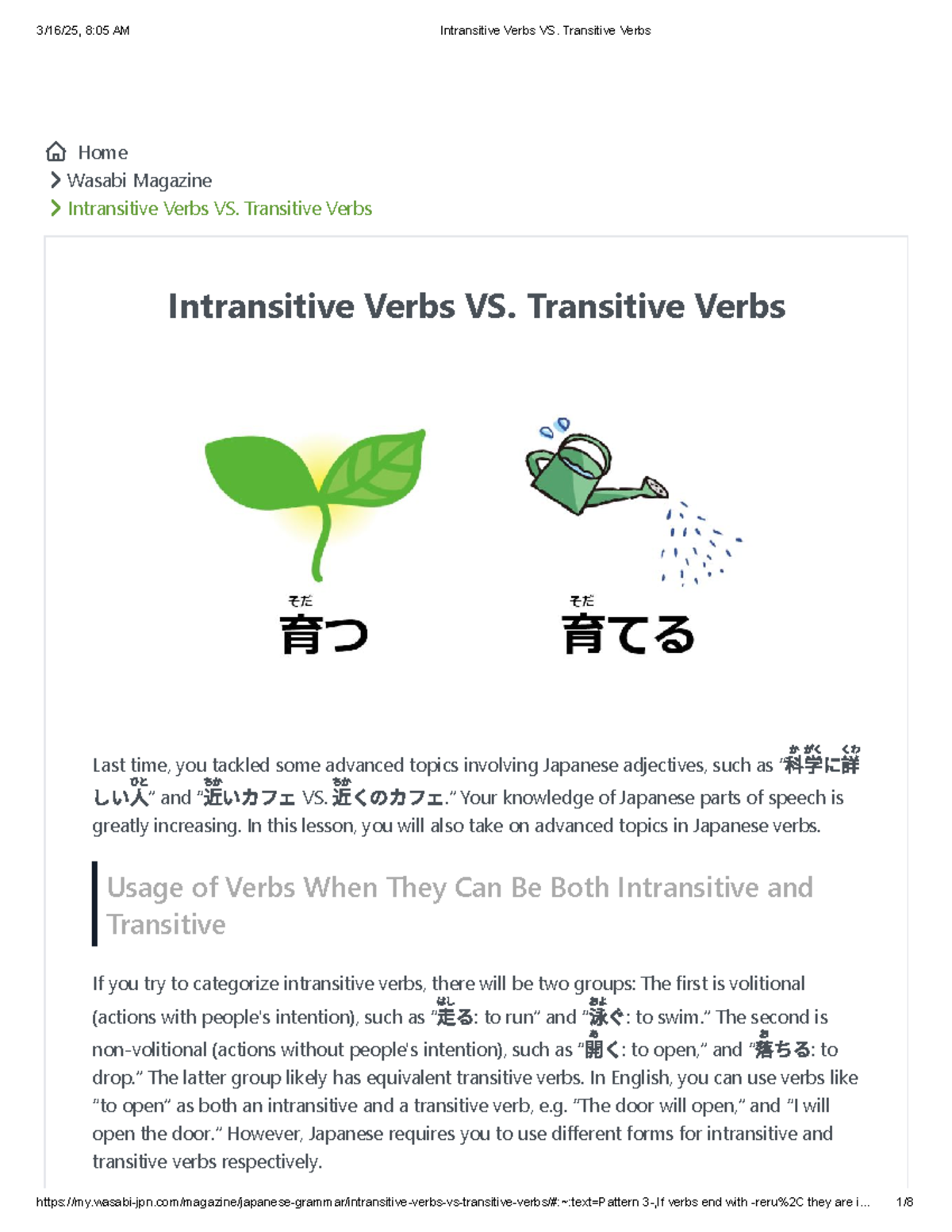Japanese verbs can be categorized into two main types: transitive and intransitive verbs. Understanding the difference between these two types of verbs is crucial for mastering the Japanese language.
Transitive verbs in Japanese are verbs that require a direct object to complete their meaning. In other words, these verbs act on something or someone. For example, the verb “taberu” (to eat) is a transitive verb because it requires an object to specify what is being eaten.
Transitive vs Intransitive Verbs
In contrast, intransitive verbs in Japanese do not require a direct object to complete their meaning. These verbs express an action that is performed without the need for a direct object. For example, the verb “aruku” (to walk) is an intransitive verb because it does not require a direct object to convey its meaning.
It is important to note that some verbs in Japanese can be both transitive and intransitive depending on the context in which they are used. For example, the verb “kiku” can mean “to listen” as a transitive verb when followed by a direct object, or “to ask” as an intransitive verb when used without a direct object.
When using transitive and intransitive verbs in Japanese, it is essential to pay attention to the particles that accompany the verbs. The particle “を” is used to mark the direct object of a transitive verb, while the particle “が” is used to mark the subject of an intransitive verb.
Mastering the use of transitive and intransitive verbs in Japanese can be challenging for language learners, but with practice and exposure to the language, it can be achieved. By understanding the nuances of these two types of verbs, learners can improve their proficiency in Japanese communication.
In conclusion, transitive and intransitive verbs play a vital role in the Japanese language, as they help convey different types of actions and meanings. By mastering the use of these verbs, learners can enhance their language skills and communicate more effectively in Japanese.
